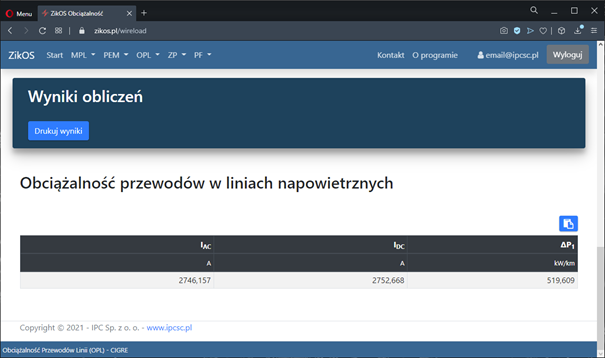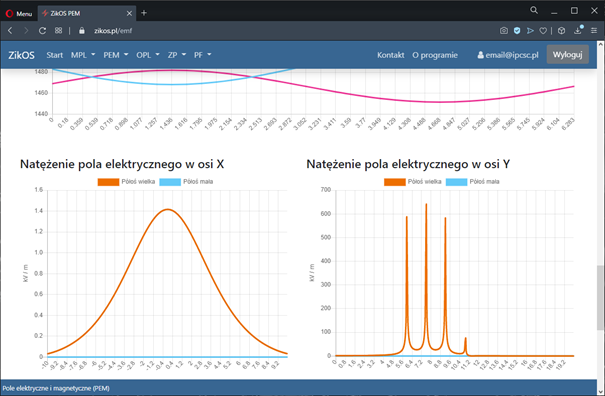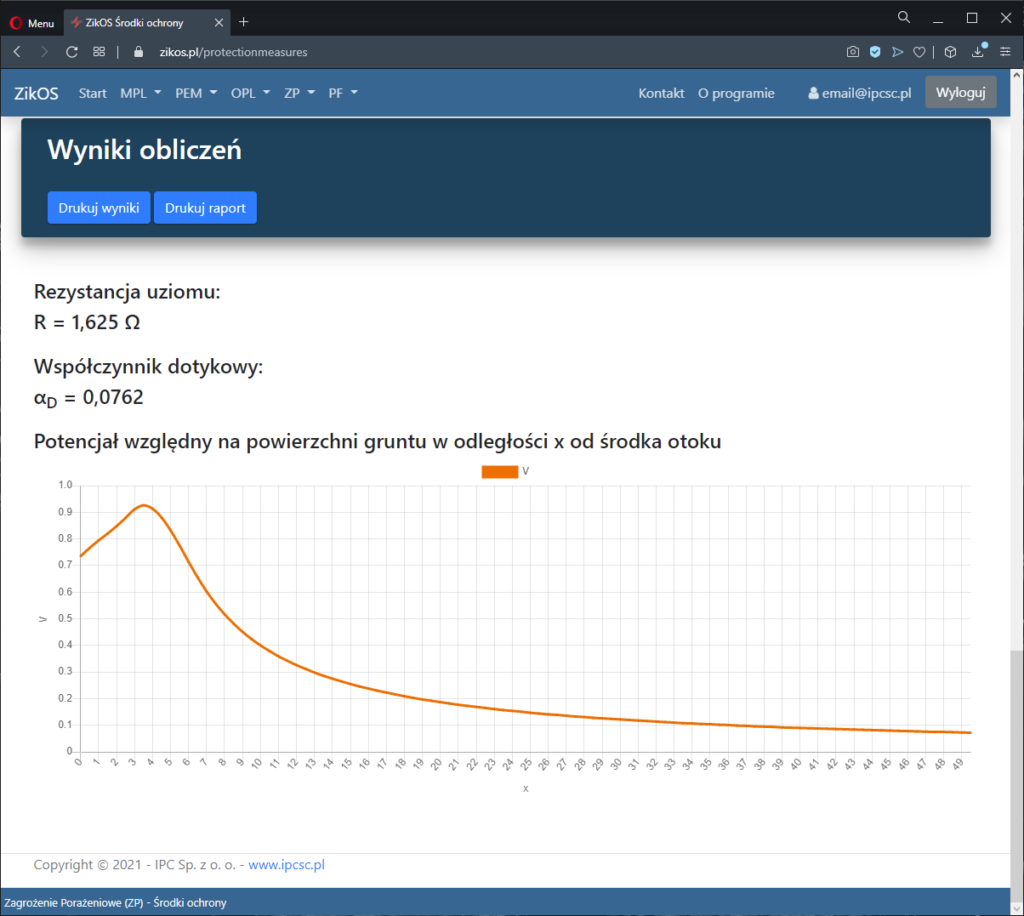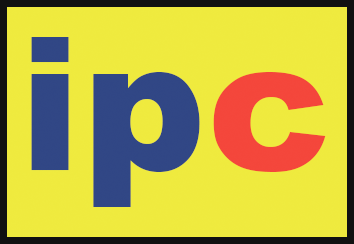The ZikOS program is used for a comprehensive analysis of the operating states of overhead power lines. The ZikOS system enables analysis of cable mechanics, line electrical parameters and line impacts on the environment. The developed solutions enable advanced analysis of the current line condition, effective design of new and modernized lines, and effective assessment of environmental threats related to their operation.
Wire mechanics
Performing calculations of stresses, sags and cable tensions in accordance with the standards:
- PN-E 05100-1:1998,
- PN-EN 50341-3-22:2010,
- PN-EN 50341-2-22:2016
and according to the parameters set by the User. Performing calculations taking into account non-linear stretching characteristics of cables, e.g. high-temperature cables (stresses, sags and EPE tensions). Full analysis of guy sections, taking into account asymmetric loads, insulator deflections, diagonal spans, etc.

Load ampacity
Load capacity of overhead line wires (CIGRE, dynamic, short-circuit – working and lightning protection wires). Taking into account the ambient temperature, wind speed and direction, sunlight, technical data of the work cable, and the height of the line suspension above sea level. Determination of quasi-dynamic thermal load capacity depending on the ambient temperature – simulation of cable operation in weather conditions recorded in the historical data set, possibility of determining the cable load capacity for a given, acceptable risk of exceedances. Determination of short-circuit load capacity, especially for lightning conductors of OPGW cables – an earth fault is simulated on each line support structure and short-circuit currents in working and lightning conductors are determined.

Electromagnetic field
Calculations of the electromagnetic field generated by medium and high voltage overhead lines.
Electric field intensity distributions and magnetic field intensity distributions for given wire systems. Distribution of electric field intensity on the surface of the conductor and insulation.
Electric and magnetic field distribution:
- along the X axis – at a given height above the ground level and
- along the Y axis – at a given distance from the line axis.
The calculations performed constitute the basis for determining the permissible zones of people staying in the vicinity of the line.

Electric shock hazard
Determination of grounding voltages and contact shock voltages at supporting structures and the potential distribution on the ground surface near these structures. Analysis of disturbance states in the line – an earth fault is simulated on each line support structure and the short-circuit currents, earth currents, earth voltages and shock voltages at the support structure are determined. For a given short-circuit duration, the determined contact shock voltage is compared with the permissible value.

Line profile
Plotting a longitudinal profile of a line, enabling quick determination of close-ups at a specific point in the span; generation of a 2D view of the analyzed span, with phase and lightning conductors of the lines and ground contours plotted. The generated profile meets the standards used in the line’s design documentation.

Program equipment variants
ZikOS software is a cloud solution available after logging in from a web browser. Thanks to the subscription licensing model (three-month, half-year and annual subscriptions), we flexibly adjust the variant and access time to the application to your current needs.

